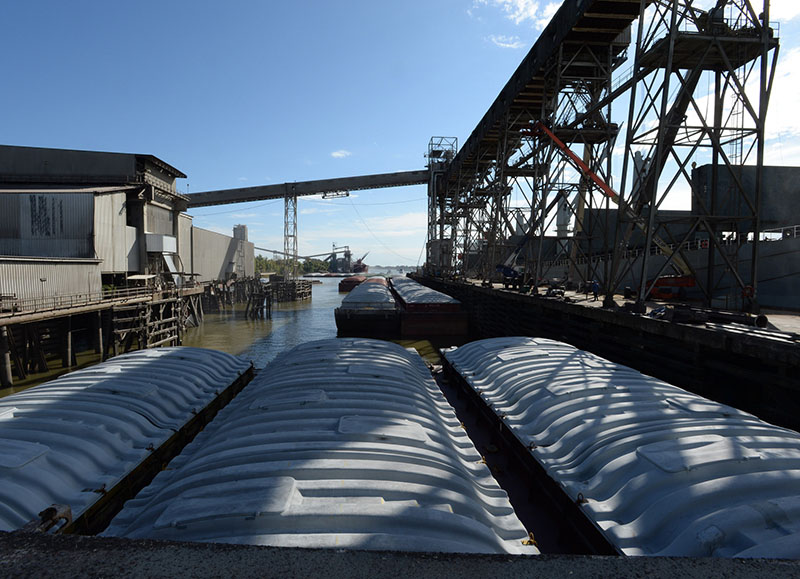Through Dec. 12, fourth-quarter barge grain volumes have surpassed one million tons for five weeks in 2020, compared to only one week in 2019 and none in 2018, according to the U.S. Department of Agriculture. As of Dec. 12, year-to-date barge grain shipments were 37.3 million tons, 32% higher than the same time in 2019.
High barge grain volumes in 2020 are due to unusually high demand from the international export market and an unusually swift harvest this year, the USDA said. From early November to early December, U.S. total grain inspections have been 42% higher than the same time last year and 38% above the three-year average. The result of this high export demand is a high demand for barges to move corn and soybeans down the Mississippi River to the Gulf ports. Additionally, favorable weather in the Upper and Mid-Mississippi River areas for most of the first half of this quarter allowed a speedy harvest. The quick harvest created a push for shippers to move the crops to the river ports. Reflecting both the swift harvest and high demand for exports, barge movements signal a bullish market in fourth quarter 2020, the USDA said.
Similar to their effect on barge movements, the surging demand for exports and quick harvest also contributed to higher rates in the first half of the quarter. Weekly barge rates in fourth quarter 2020 have trended higher than in previous years. For the week ending Dec. 15, the average weekly Illinois River rate was $24.60/per ton (adjusted by the Producer Price Index), 43% higher than last year and 34% higher than the three-year average for the same quarter, according to the USDA. However, spot barge rates in the second half of the quarter have reflected the industry’s struggle to adjust the logistics on the Lower Mississippi River and parts of the Illinois River.
The industry has reported delays in both upbound and downbound traffic, as positioning empty barges to fulfill the requests became an ongoing challenge due to weather and water condition. Despite the continuously high demand for exports in the second half of the quarter, spot rates began trending downward in mid-November following the long-term pattern. As shippers and the barge industry waited for logistical conditions to improve, the drop in bids for the spot market also pushed the rates down.





